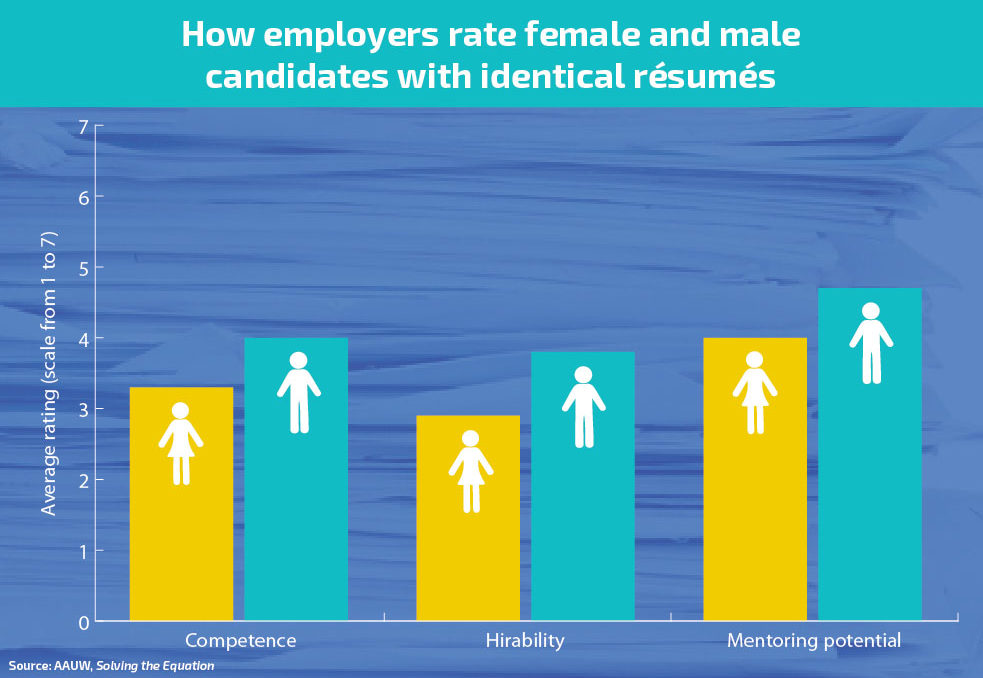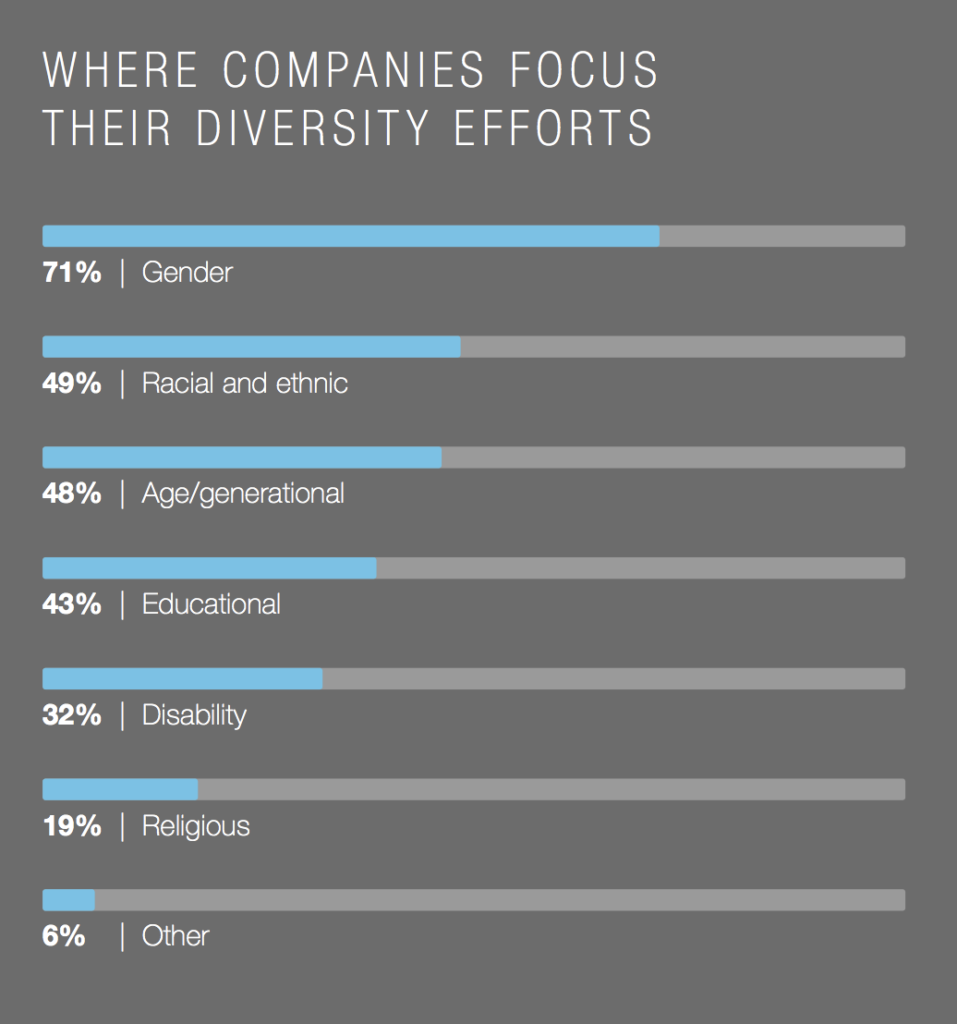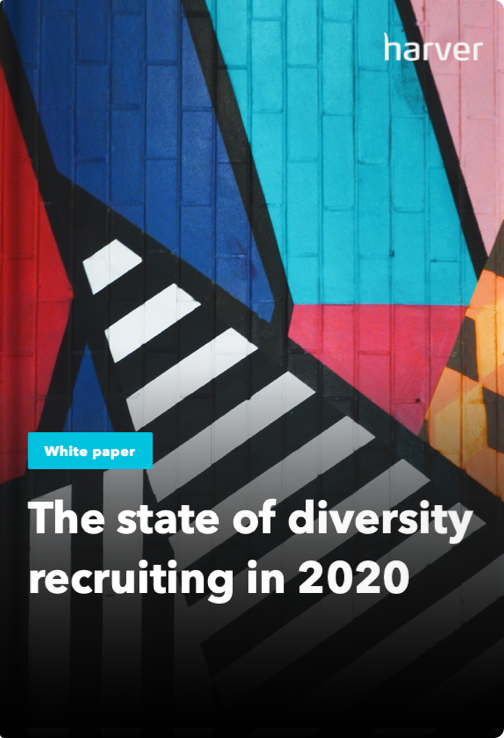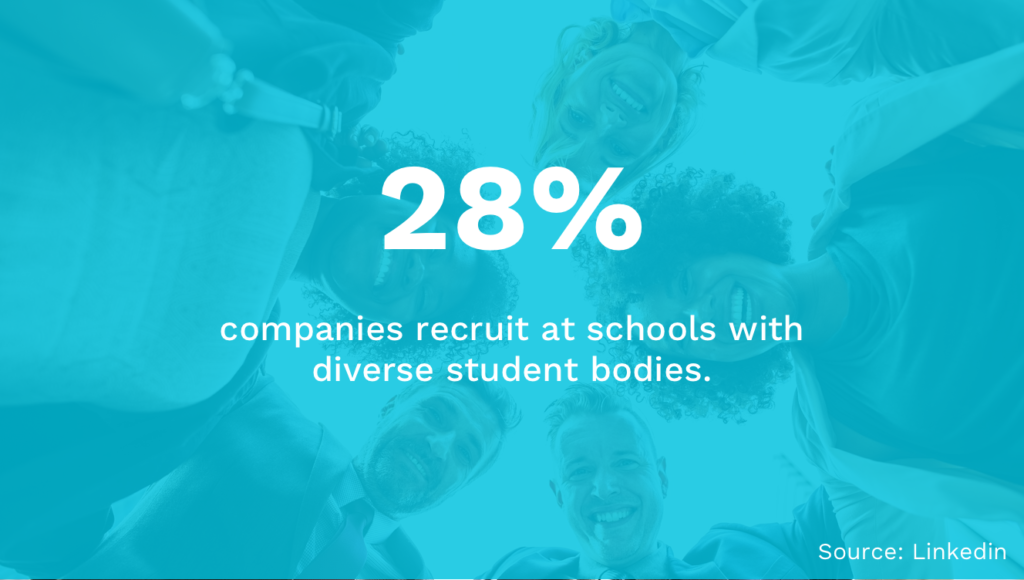The goal of every recruiter is to select and hire the best employees possible.
However, recruitment decisions can be (and often are) influenced by unconscious biases. These biases can be difficult to uncover and can lead to imbalances in the hiring process, resulting in uniformity in the workplace instead of diversity.
And diversity needs to be encouraged because not only does it enhance employee experience, it is beneficial to the business’ bottom line.
Essentially, a diverse workforce strengthens a company’s reputation as being a great place to work. And existing diversity attracts diverse job seeking candidates, meaning a wider pool of strong talent to hire from.
Overview of ways to reduce hiring bias
- Build awareness around hiring bias
- Check the language in job descriptions
- Blind the resume review process
- Only use validated assessments
- Standardize the interviews
- Watch out for bias toward likeability
- Implement a collaborative hiring process
- Acknowledge confirmation bias
- Think about diversity/inclusivity goals
- Don’t rely on intuition
- Vary where you advertise
Listen to all the ways to reduce hiring bias in the podcast Recruitment On The Go available on Soundcloud and Apple Podcasts!
|
So where to start?
What is hiring bias?
To achieve this ultimate goal of diversity in the workplace, recruiters have to ensure that certain persons or groups of people are not favored over others, during the hiring process.
But we humans have been hard-wired to make impulsive decisions; a trait refined over millennia to ensure the survival of our species.
Our decision-making process tends to be an unconscious occurrence, a result of learned assumptions and beliefs that help us navigate a complex world. These unconscious biases allow us to form opinions of others without in-depth prior knowledge and affects how we treat them.
Employers in STEM fields tend to rate male applicants higher than female candidates with identical resumes. This is an example of gender bias in hiring.
Basically how we perceive our world is based upon our understanding of it, and our connectedness to other people is typically built upon shared or common experiences, and unfortunately recruiters are not exempt.
If left unchecked, recruiters can be guided by their biases: they can hire based on the way an applicant looks, the college they went to, the hobbies they have or the social circles they move in; none of which have any effect on a candidate’s ability to carry out the role they’re being recruited for.
Benefits of reducing hiring bias
Hiring bias can also lead to selecting employees who aren’t the right fit for your company, and it can even get your company into legal trouble on the grounds of discrimination.
Those are not the only reasons why you should do your best to reduce hiring bias at your company, though.
Eliminating hiring bias and promoting diversity & inclusion has four easy benefits:
- Diversity & inclusion aids recruitment. Two-thirds of candidates prefer to work amongst a diverse workforce; the more diverse your employees, the more diverse candidates you will attract and the wider the talent pool you will have to dip into.
- Diversity & inclusion brings creativity. Companies with leaders who display diverse traits are more innovative than companies whose leaders lack diversity.
- Diversity & inclusion improves employee engagement. Employees working under inclusive leadership are 39% more likely to be engaged. Inclusive leadership has an even more significant influence on employee engagement among Millennials. 83% of actively engaged Millennials believe their organization fosters an inclusive culture.
- Diversity & inclusion is better for your bottom line. Research suggests that companies with a diverse workforce yield 19% higher profits than those with uniform employees.
Eliminating hiring bias is not just beneficial for the company, however.
For employees, working in a diverse and inclusive environment fosters degrees of mutual respect. A diverse workforce may not necessarily generate the most idyllic of work environments, but when all employees bring different dynamics to the team, it amplifies the efforts of the whole group – something that everyone will recognize as advantageous for all team members.
Mutual respect increases the instances of conflict resolution. If team members are aware they bring different skills and backgrounds to the table, there should be less conflict amongst them as they won’t be competing with each other. Instead, employees should excel with their unique strengths and work together towards a shared common goal.
In a nutshell, eliminating hiring bias results in a diverse workforce. And a diverse workforce means a more successful business.
Companies aim their diversity efforts on different fronts, ranging from gender through age to religious diversity.
How to prevent hiring bias?
1. Build awareness around hiring bias.
This might seem to be counter-productive, talking about the elephant in the room. But it’s the only way people learn that their ‘gut instinct’ isn’t necessarily a good thing.
By teaching recruiters and everyone else responsible for recruiting about hiring bias, you will draw attention to it, allowing people to acknowledge when they’re doing it, why they’re doing it and more importantly how they can alter their behavior so they are no longer base their decisions on their biases.
Only by acknowledging the issue of hiring bias, can we work towards finding a solution to eliminate it.
The state of diversity recruiting in 2020
2. Check the language in job descriptions.
Studies have found that the language used in a job description, rather than making the job sound appealing to a broad spectrum of candidates, actually can have the adverse effect, and put people off applying for the job.
Why? By unwittingly including gender or age in the advert, you could be alienating a large swath of potential applicants.
Terms such as ‘salesman’ or inadvertently assigning gender to the ideal candidate in the advert can deter applicants, as can making the job advert all about the company rather than about the candidate. This includes, for example, reams of text about what the company requires of the candidate, rather than about the skills the ideal candidate has.
Prevent bias by removing gender, age and other restrictive terms from the job advert. Don’t make the job title and description so prescriptive that only a select few individuals could apply – make it as inclusive as possible. At the end of the day, you can always teach someone to use your program, but you can’t always teach someone how to be adaptable or be a team player.
3. Blind the resume review process.
If you don’t think you can objectively thin out resumes, do it blind. By which we mean remove the candidate’s name, age and other potentially discriminating information from the resumes before you go through them. This will remove any unconscious bias you may hold when you rank the resumes according to the number of relevant skills the candidate possesses, not where they were born.
Don’t think you hold any biases? Recent research showed that minorities who were attuned to unconscious bias against them and ‘whitened’ their resumes as a result, received twice as many calls back as those who didn’t.
4. Only use validated assessments.
Validated assessments are those pre-employment tests that have been screened to remove bias. The use of such assessments during the hiring process has been ongoing for years as they are an efficient and reliable way of providing insights into the capabilities and traits of potential employees. By using scientifically validated assessments, you have control over the input and you can be sure that the output – the results – is reliable too.
Unvalidated assessments can be rife with biases and should be avoided at all costs.
Validated scientific assessments bring many benefits to companies, including increase in profits.
5. Standardize the interviews.
If you don’t already have a standard interview format with set questions, then implement one now. Don’t rely on your interviewers to read the room and ask questions as they see fit. They will have their own unconscious biases.
Standardize the interview questions and the post-interview debrief so that all assessors follow the same framework when assessing and ranking candidates.
While you’re at it, standardize the whole recruitment process to eliminate bias from the get-go.
6. Watch out for bias toward likeability.
Familiarity is comforting and we like to surround ourselves by people we feel comfortable with. The ideal candidate for most people is the person they like, the one they can see themselves sharing a beer with. But likeability is not an indicator of how well someone would perform in a given role.
Structured interviews and a diverse hiring panel help eliminate the likelihood of hiring based on a likeability bias.
To further reduce the possibility of likeability bias, pair the interview with a skills test or a real-life problem-solving challenge in order to give each candidate the best possibility of demonstrating their particular strengths. This keeps the focus on the performance of the candidate and not on how well you’ve ‘clicked’ with them.
7. Implement a collaborative hiring process.
Diversity attracts diversity. Don’t have just one person responsible for hiring, make the hiring process as unbiased as possible by including as many different people, with differing backgrounds and differing worldviews as you can.
This way, a broad spectrum of people will have an input on each candidate, and everyone will be looking for something different, allowing the hiring to be a collaborative process, not based on one person’s decision.
Have everyone individually note down their thoughts during interviews and submit these, or discuss them openly as a group during the selection process.
8. Acknowledge confirmation bias.
Interviewing candidates is a great way to get to know someone, but basing your hiring decision on an interview alone should be avoided. This is because we can be prone to confirmation bias.
Confirmation bias is the tendency we all have to seek out information that supports our preconceived notion about someone or something.
Acknowledge that confirmation bias exists and conduct your interview only to get acquainted with the candidates, but assess them via a skills test or an on the job interview to make sure they can walk the walk, not just talk the talk.
Confirmation bias causes problems not only in science, but also in recruitment. (Image source)
9. Think about diversity/inclusivity goals.
Here is a staggering fact: hiring discrimination against black Americans hasn’t decreased in 25 years.
If you want to reduce hiring bias and increase diversity among your workforce, how will you know if you’ve reached your target, if you don’t set goals?
So before you start hiring, define what you want to achieve. For example:
- more ethnic minorities
- more candidates from schools that aren’t in the Ivy League
- more women
- older candidates
- younger candidates
- all of the above?
Whatever you want to achieve, clarify it and share it widely.
Don’t just pay lip service to being an equal opportunities employer – let your candidates know you’re actively working towards being a diverse employer and encourage diverse candidates to apply.
Make your goals really apparent and include your diversity criteria within your job description – just don’t go too far and introduce bias against anyone who isn’t diverse.
10. Don’t rely on intuition.
Intuition is based on assumptions. Assumptions are biased.
11. Vary where you advertise.
If you want to achieve your diversity goals but are wondering why you aren’t getting anywhere – when you do the same thing for recruitment over and over again – think of how you can diversify your recruitment campaign.
- Look for job boards away from the ones you typically use.
- Don’t focus only on niche sites that are specific to your industry.
- Change the search parameters to include potential candidates on LinkedIn who may not possess all of the specific job skill sets, but who possess strong transferable skills. The specific role requirements can always be taught.
- Target university and college jobs boards that you would normally shy away from, not all rising stars can afford to go to the top schools.
Before you go
At the end of the day, eliminating hiring bias makes good business sense for the company’s bottom line. Plus, removing hiring bias will help you achieve a fair hiring process and reduce the failure rate for hiring which can be up to 50%.
As evidence: consulting firm McKinsey found that gender-diverse companies are 15% more likely to outperform those who aren’t gender-diverse, and ethnically diverse companies are 35% more likely to outperform those who aren’t ethnically diverse.
To get started, always question your own judgment and become aware of your own biases.
The state of diversity recruiting in 2020

